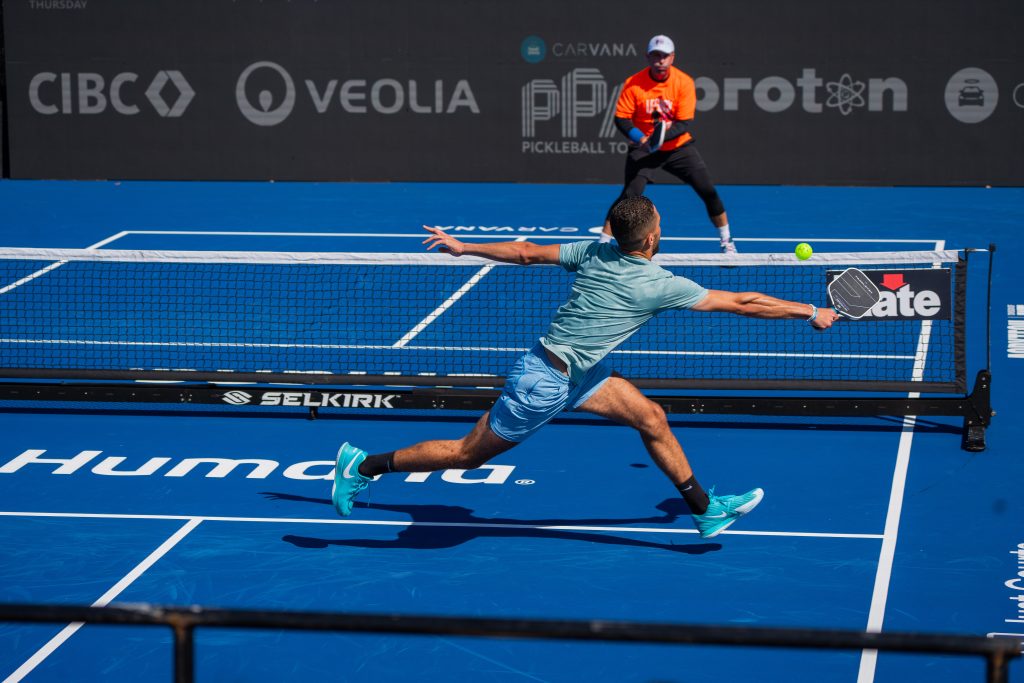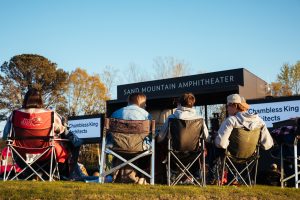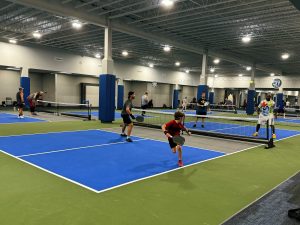Image courtesy of The Courts, Cape Coral
From backyard pastime to Olympic hopeful, pickleball’s explosive growth has facility owners and operators scrambling to keep pace with the sport’s evolving demands. As we dive into 2025, the pickleball landscape is transforming rapidly, with innovative design concepts, cutting-edge operational strategies, and community-centric programming taking center stage. This blog post explores the latest trends shaping the future of pickleball facilities, from advanced court surfaces and smart technology to multi-use spaces and “eatertainment” concepts. Whether you’re a facility owner, a program operator, or a fan, join us as we uncover how these innovations are elevating the game and shaping the pickleball experience for players and spectators alike.
Ready to make an impact in your community?
Design Trends
Advanced Surfaces
Cutting-edge court surfaces are revolutionizing the pickleball playing experience. Advanced surfaces, such as cushioned acrylic systems and specialized synthetic turf, are gaining popularity for their ability to enhance player safety and performance. These surfaces typically feature multiple layers, including resilient underlayment that reduces joint impact, and specialized top coats or turf fibers that ensure consistent ball bounce. As pickleball attracts a diverse range of players, including older adults and those with joint sensitivities, the demand for these comfort-oriented surfaces has surged. The benefits extend beyond safety, as these advanced materials contribute to longer, more enjoyable gameplay and potentially extend players’ careers in the sport. By offering superior shock absorption without sacrificing play quality, these surfaces are making pickleball more accessible and appealing to a wider audience, driving innovation in court design and construction.
LED Lighting Systems
State-of-the-art LED lighting is illuminating courts with precision, reducing glare and improving visibility. These systems enhance gameplay by providing uniform lighting conditions while consuming less energy, aligning with sustainability goals. They also extend facility usage hours by enabling evening play, which is increasingly popular among recreational players with busy schedules. As facilities look to maximize operational time and improve player experience, LED lighting has become a must-have upgrade.
Multi-Use Courts
Versatility is key in modern facility design. Many venues are creating courts that can easily transition between pickleball and other sports like tennis or basketball to maximize space utilization. Multi-use courts appeal to communities with diverse recreational needs while increasing revenue potential for operators. This adaptability ensures facilities remain relevant as player demands evolve, making them valuable assets to their local areas.
Smart Courts
Technology integration is transforming pickleball facilities with smart courts equipped with cameras and digital displays that offer real-time performance tracking and interactive training tools. Players can monitor their progress, analyze gameplay data, and enhance their skills using these innovations. The rise of smart courts reflects the growing interest in tech-enabled sports experiences, appealing to both competitive players seeking improvement and younger audiences drawn to interactive features.
Operational Trends
Luxury “Eatertainment” Concepts
Pickleball venues are evolving into entertainment destinations by incorporating high-end dining options, premium amenities, and social spaces alongside courts. This trend caters to players looking for more than just a game—it’s about creating memorable experiences that blend recreation with leisure. By offering upscale food and beverage services or lounge areas, facilities can attract a broader audience while boosting revenue streams. These social hubs also align with pickleball’s reputation as a community-driven sport that thrives on interaction both on and off the court.
Multi-Sport Facilities
Operators are diversifying their offerings by combining pickleball with other recreational activities such as golf simulators, fitness centers, or breweries to create comprehensive entertainment destinations. Multi-sport facilities appeal to a wider range of interests while fostering a vibrant atmosphere where families or groups can enjoy multiple activities under one roof. This approach maximizes space utilization while positioning venues as community-focused hubs rather than single-sport facilities.
Efficient Design and Wayfinding
As pickleball facilities grow in size and complexity, thoughtful layout design is becoming increasingly important. Clear signage, intuitive wayfinding systems, and efficient movement on and off courts ensure smooth operations during peak times while enhancing the overall user experience. These improvements contribute to customer satisfaction by creating a welcoming environment that feels professional yet accessible—essential for retaining players in competitive markets.
Programming Trends
Open Play Flexibility
Facilities are embracing open play scheduling that allows players to drop in at any time without reservations or rigid time slots. This flexibility accommodates recreational players who prefer spontaneous games while increasing court utilization during off-peak hours. By fostering an inclusive atmosphere where players of all skill levels can join games freely, open play programming helps build stronger communities around pickleball venues.
Skill-Level Organization
Organizing courts by skill level ensures balanced gameplay where players compete against others of similar abilities. This trend enhances player satisfaction by reducing mismatched games that can frustrate participants or discourage newcomers from returning. Skill-level organization also fosters inclusivity by creating welcoming environments for beginners while providing competitive opportunities for advanced players—a win-win for growing participation across all demographics.
Community-Focused Approach
Pickleball clubs are emphasizing community-building initiatives such as social events, tournaments, or leagues designed to connect players beyond the game itself. These programs foster camaraderie among participants while driving retention through meaningful engagement opportunities. As pickleball continues to thrive as a social sport, facilities that prioritize community-focused programming will stand out as destinations where people come not just to play but to belong.
By embracing these trends in design, operations, and programming, pickleball facilities can create dynamic spaces that cater to the evolving needs of players while maximizing their potential as profitable businesses and community hubs. As the sport’s popularity continues to soar into 2025 and beyond, venues that innovate will be best positioned to lead this exciting movement forward!





